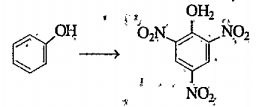Complete Solutions to Exercise of chapter SET-13 of Class 12 book with complete answers and questions
| Class 12 | CHEMISTRY |
| Chapter | SET-13 |
| UNITED BOOK HOUSE | Exercise |
| Number Of Questions | 46 |
| Academic Year | 2023-24 |
The unoccupied space in a body centred cubic unit cell is.
View SolutionThe state fo hybridisation of the central atom in a square planar complex is.
View SolutionWhich of the following compounds can be used as antifreeze in automobile radiators.
View SolutionA first order reactions 50% completed in`1.26xx10^4` sec. How much time would take for 100% completion.
View SolutionWhich one of the following is an oxide.
View SolutionWhich oxidation state is common for all lanthanoid.
View SolutionThe unit of ebulioscopic constant is.
View SolutionIn the cell `Zn//Zn^(2+)//Cu^(2+)//Cu` the negative terminal is.
View SolutionFor the single step reaction of type `A + 2B rarr E + 2F` the rate law is.
View SolutionWhich of the following ores is concentrated by chemical leaching method.
View SolutionChlorobenzene can be obtained from benzene diazonium chloride by.
View SolutionThe analgesic used to present heart attack.
View Solution`XeF_4` molecule has the shape.
View SolutionAcid anhydrides on reaction with primary amine gives.
View SolutionThe reductive ozonolysis of benzene gives.
View SolutionDefine Peptization and Emulsion.
View Solution`SF_6` exists but `SH_6` has no existence. Why?
View SolutionArrange the following oxides in the order of their increasing acidity.
`CrO_3`, CrO, `Cr_2O_3`.
View Solution6gm of urea and 9gm of glucose are dissolved in 1 Litre aqueous solution. Calculate the osmotic pressure of the solution at 300K.
View SolutionFor the cell `Cu//Cu^(2+)//Hg^(2+)//Hg`, `E_(cell)^(6) = 0.45 V`. Find the standard reduction potential of `Hg^(2+)//Hg` electrode. Given `E^@ cu^(2+)//cu = 0.34`.
View SolutionAlcohol acts as both acids and bases. Why?
View SolutionGive two examples of Co-polymers.
View SolutionDifferentiate between Schottky and Frenkel defect.
View SolutionWhat is point defect? A metal has cubic close packed crystal structure. Its density is `2.7 gcm^-3`. The radius of the metal atom is 1.43 A. Determine the atomic weight of the metal.
View SolutionWhat do you mean by colligative properties? Boiling point of water at 750mm is `99.63^@C`. How much sucrose is to be added to 500gm of water so that it boils at `100^@C` (given `k_b = 0.52`)
View SolutionState Faradays laws of electrolysis. What is meant by 1 Faraday?
View SolutionHow many faradays of electricity will be required to electrilyse completely 1 mol molten `Al_2O_3` to produce Al metal and `O_2` gas?
View SolutionWhat do you mean by Zero order reaction? Determine the order of the following reactions.
`2N_2O_5(g) rarr 4NO_2(g) + O_2(g)`
View SolutionWhat do you mean by Zero order reaction? Determine the order of the following reactions.
`CH_3CHO(g) overset(450^@C) rarr Ch_4(g) + CO(g)`
View SolutionWhat is gold number? Why are lyophilic sols more stable than lyophobic sols?
View Solution`H_3PO_3` acts as a reducing agent but `H_3PO_4` does not. Why?
View SolutionDescribe Cannizzaro's reaction and cross-aldol condensation.
View SolutionWhat is Tollens reagent? How can acetaldehyde and acetone be distinguished with the help of reactions?
View SolutionHow will you convert:
Formic acid to oxallic acid.
View SolutionHow will you convert:
Benzene to benzoic acid.
View SolutionHow will you convert:

View SolutionHow will you convert:

View SolutionWhat is reverse osmosis? Write one application.
View SolutionA urea solutions isotonic with 3% (w//v) glucose `(C_6H_12O_6)` solution. Calculate the concentration of the urea solution.
View SolutionWhat are interhalogen compounds? Give an example.
View SolutionAnswer the following
`CIF_3` exists but `FCl_3` does not exist why?
View SolutionIdentify A, B and C in the following.
`C_6H_5N_2^+Cl^- overset(CuCN) rarr A overset(H_2O //H^+) rarr B overset(NH_3) rarr C`
View SolutionIdentify A, B and C in the following.
`C_6H_5NO_2 overset(Fe//HCl) rarr A overset(NaNO_2 + HCl)underset(273K) rarr B overset(H_2O //H^+) rarr C`
View SolutionHow will you convert:
Acetone to propene
View SolutionHow will you convert:
Benzoic acid to benzal delyde
View SolutionHow will you convert:
Aniline to Benzoic acid
View Solution
Exercise questions and complete solutions for chapter SET-13 of UNITED BOOK HOUSE of Class 12